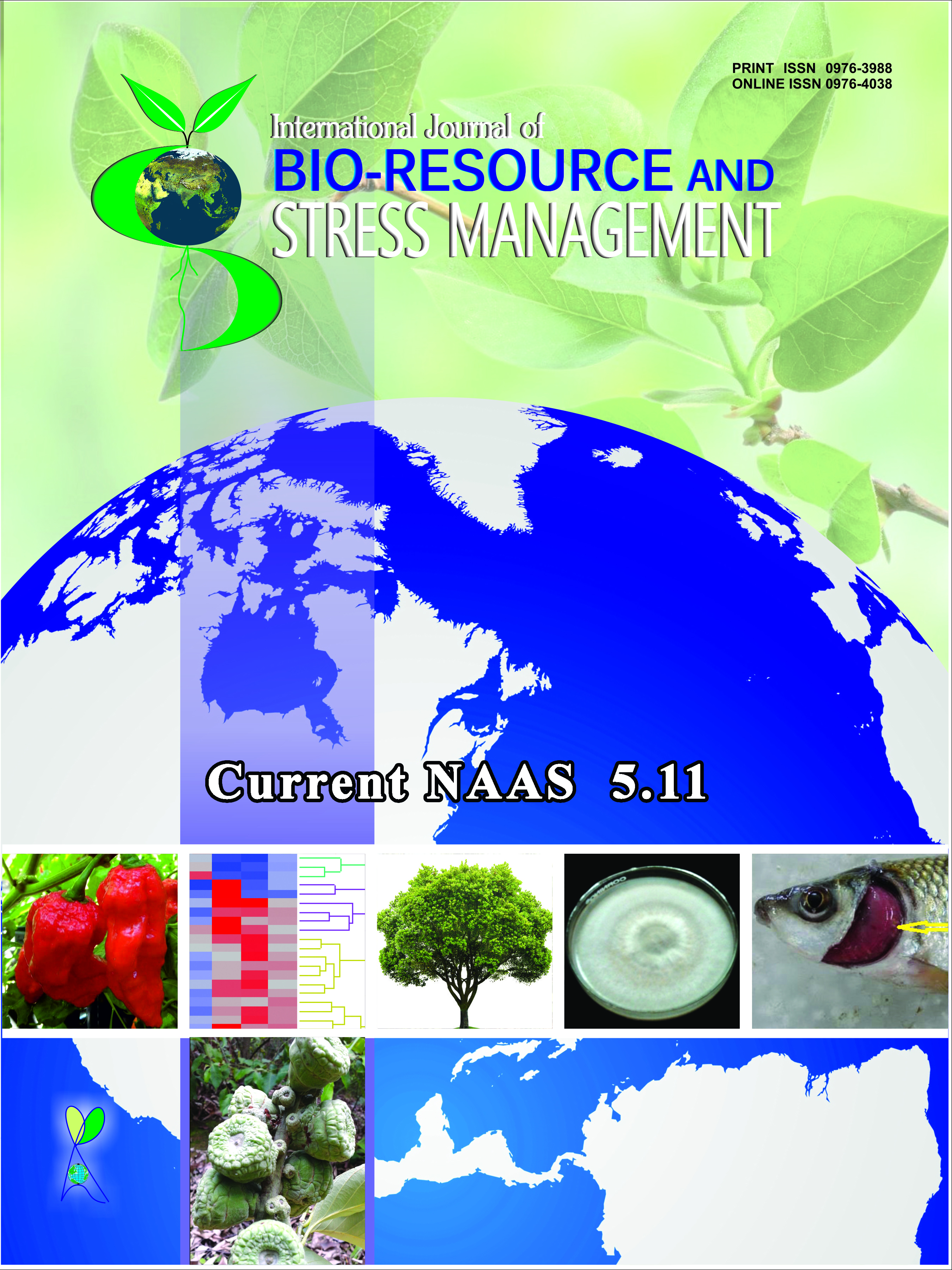Influence of Biofertilizers and Homobrassinolides on Nodulation, Yield and Quality of Groundnut (Arachis hypogaea L.)
Keywords:
Hybrid groundnut, PSB, VAM, homobrassinolide, yield, oil contentAbstract
A pot culture experiment was conducted during the pre-kharif season of 2008 and 2009 to find out the nodulation, yield and quality of groundnut (Arachis hypogaea L.) in response to biofertilizers and homobrassinolide. The experiment was laid out in compete randomized design (CRD) with four levels of biofertilizers [no inoculation, phosphate solubilizing bacteria, vesicular arbuscular mycorrhizae, phosphate solubilizing bacteria (PSB) + vesicular arbuscular mycorrhizae (VAM)] and two levels of homobrassinolides spraying [flowering and (flowering + pegging stage)]. Results revealed that inoculation of biofertilizers significantly improved nodulation and yield attributes like number of pods plant-1, number of kernels plant-1, kernel yield and oil content. Among the biofertilizers, combined inoculation of PSB + VAM resulted in 113.77, 51.81 and 31.21% higher kernel yield in first year and 114.60, 53.68 and 26.21% in second year over no inoculation, phosphate solubilizing bacteria, vesicular arbuscular mycorrhizae, respectively. With increase in levels of spraying of homo-brassinolide, increased growth and productivity of hybrid was observed. Spraying of homo-brassinolide at flowering+pegging stages gave 29.74% higher kernel yield in first year and 43.43% in second year than application of homo-brassinolide at flowering alone.
Downloads
Downloads
Published
How to Cite
Issue
Section
License
Authors retain copyright. Articles published are made available as open access articles, distributed under the terms of the Creative Commons Attribution-NonCommercial-ShareAlike 4.0 International License, which permits unrestricted non-commercial use, distribution, and reproduction in any medium, provided the original author and source are credited. 
This journal permits and encourages authors to share their submitted versions (preprints), accepted versions (postprints) and/or published versions (publisher versions) freely under the CC BY-NC-SA 4.0 license while providing bibliographic details that credit, if applicable.





